
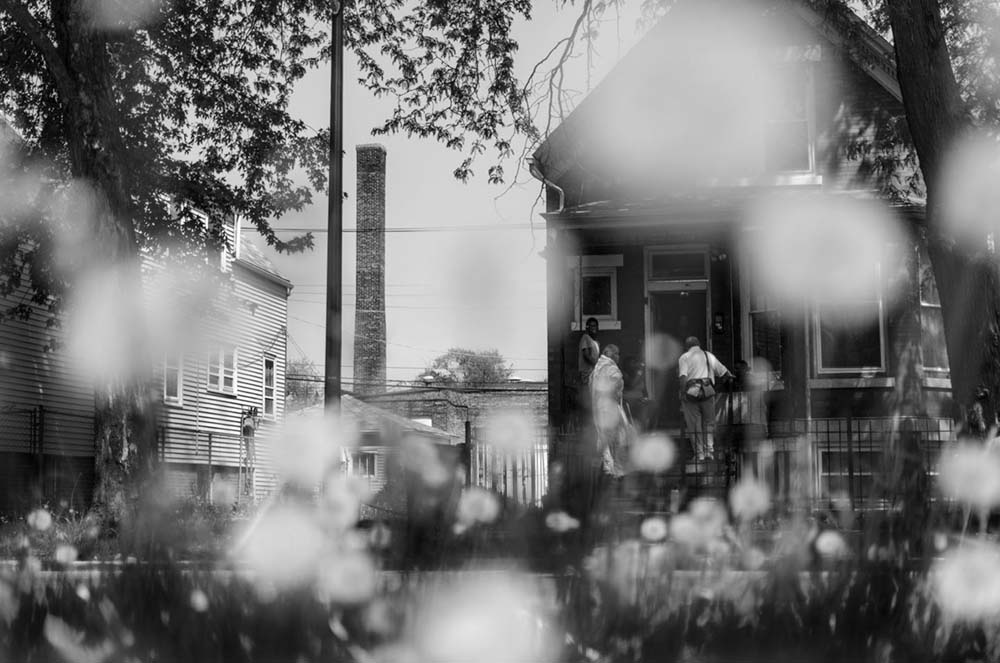

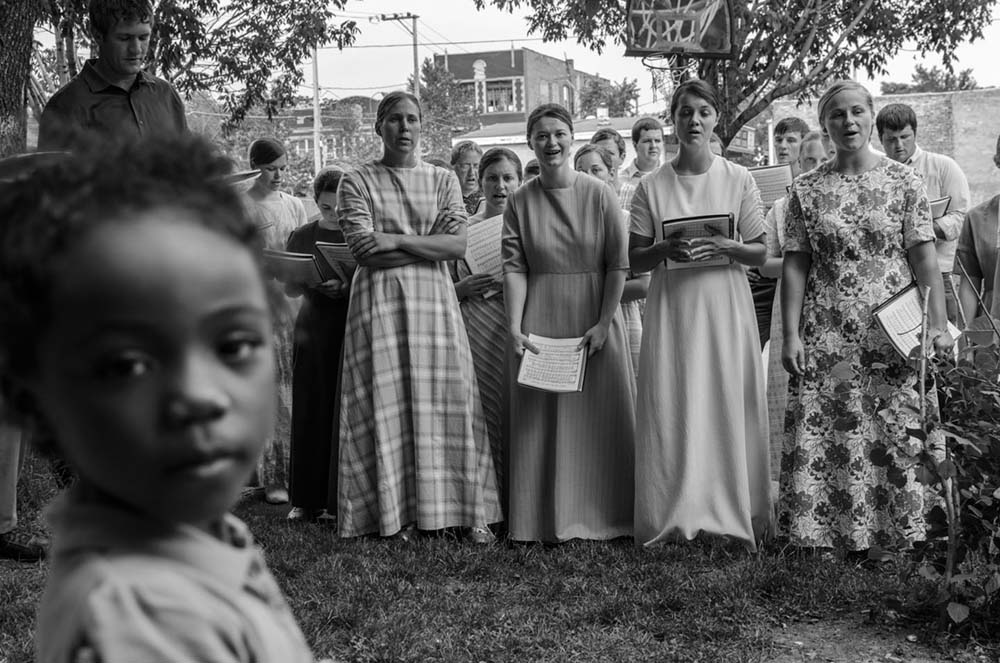
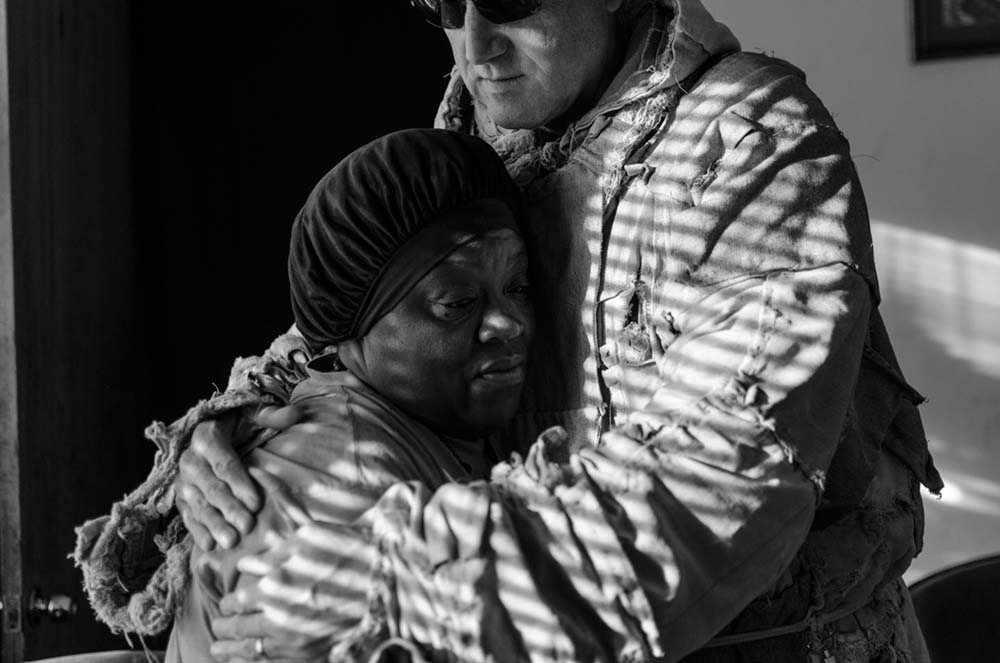
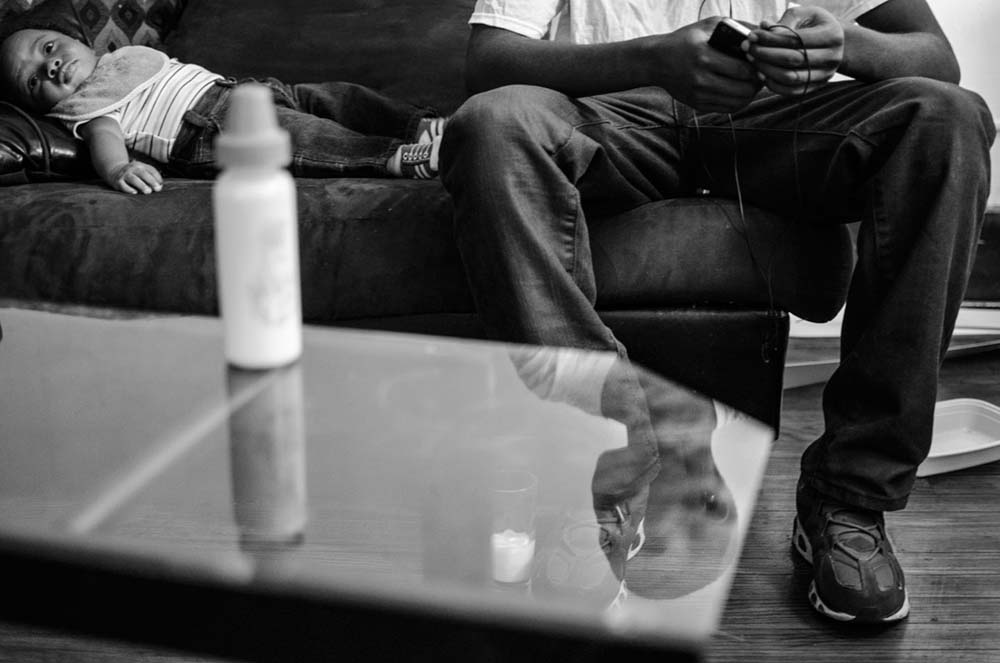
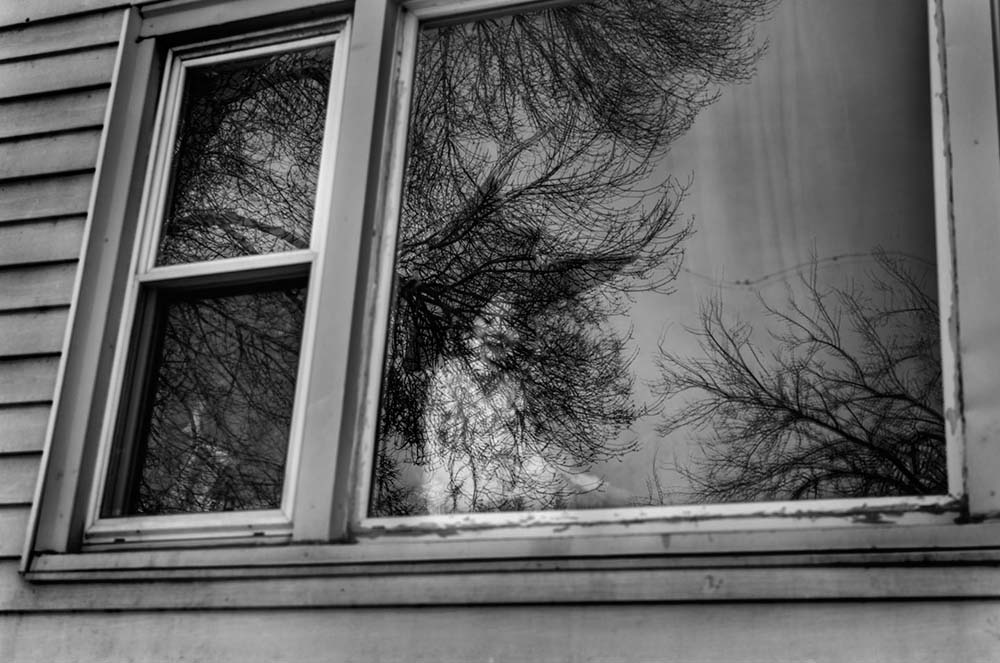
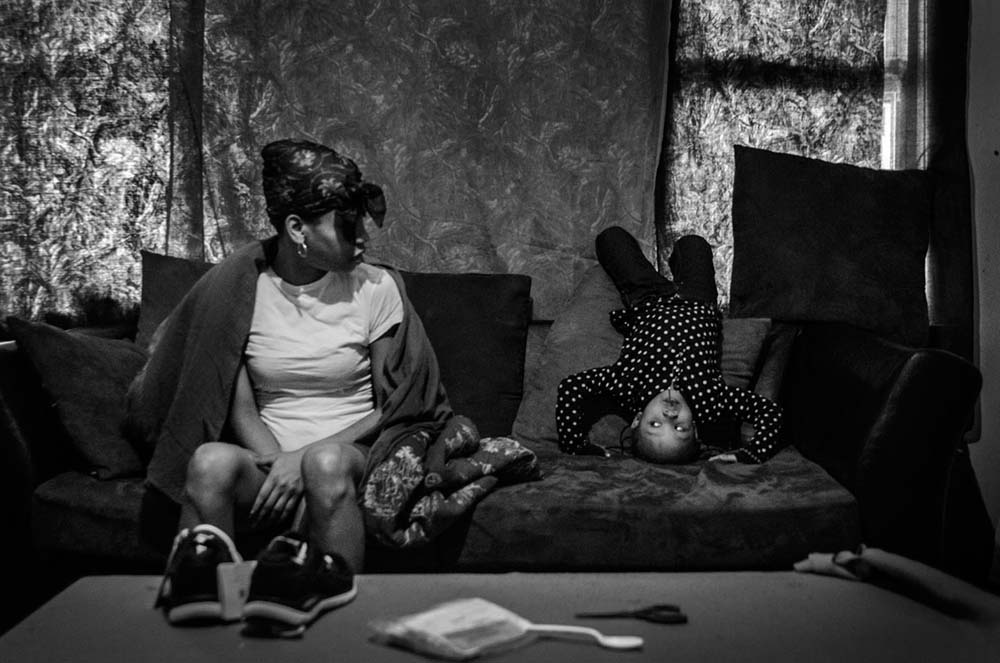
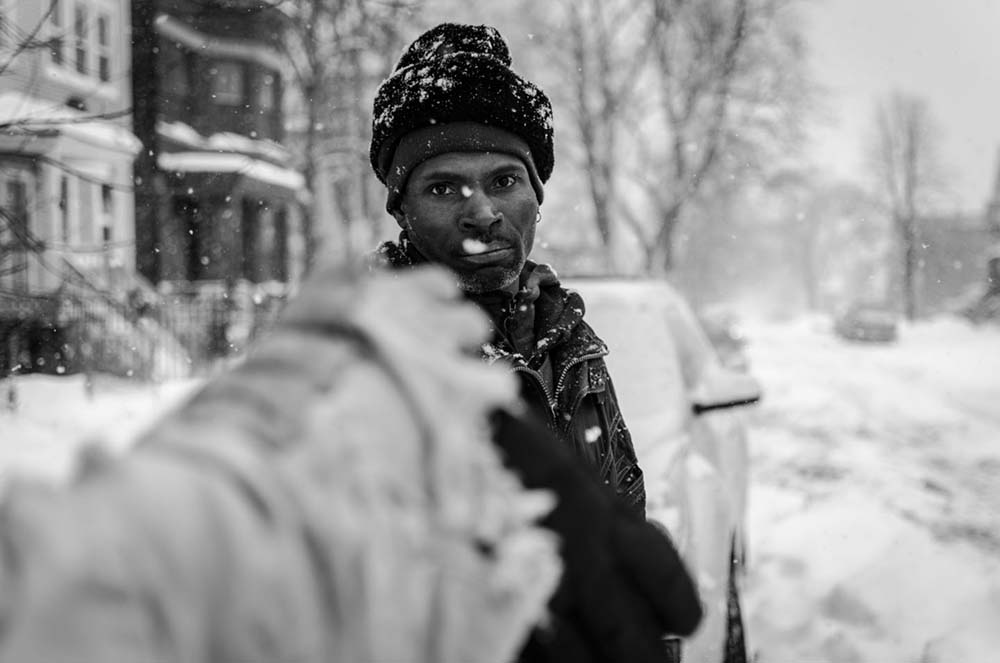

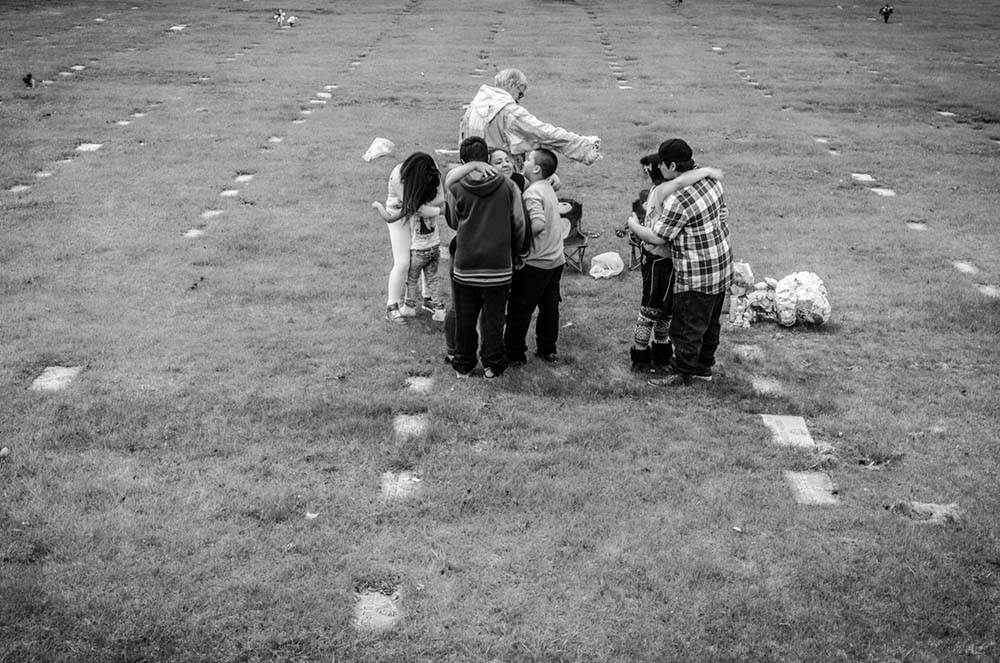

PROJECT DEVELOPMENT: Artist's Statement
First Place: Megan E. Doherty
Back of the Yards
Documenting the last remaining member of a tiny street ministry that tends to those involved in, and victimized by, gang violence on the South and West Sides of Chicago. Beyond the headlines of the notoriously high gun and gang violence in Chicago, there is the debilitating loss of human capital in many communities of the South and West Sides. For nearly three years I have been documenting the work done in one South Side neighborhood, Back of the Yards, by the only remaining member of "Brothers and Sisters of Love," a small street ministry that tends to those involved in - and victimized by - gang violence and urban poverty. Jim Fogarty, known affectionately as "Brother Jim," wears a hand-sewn habit made out of scraps of denim, now tattered after over 30 years of use. That's how long he's been traversing the dangerous streets by foot, carrying only rosary beads to pass out - that, and offering prayers, and maybe a little hope. By now, the residents largely all know who he is, and often come running when they see him coming down the street, or call out from their windows, asking him to pray for them. Once upon a time, he stood between warring gangs shooting at each other, bullets whizzing by, risking his life. Now, they ask him for rosaries. And almost three years ago, I began walking with him through this neighborhood where, in September 2013, 13 people were shot while playing basketball in a park. I've gained not just intimate access to these people, but a usually ignored vantage point: the Back of the Yards neighborhood (which takes its name from its proximity to the old Union Stock Yards, former hub of the U.S. meatpacking industry) is usually just another overlooked and stereotyped poor minority area of Chicago. But through Br. Jim, I can explore the community and its residents through his eyes. There are many photo projects that document urban poverty and violence, specifically gang violence, in all corners of the world. But I wanted to do more than show how this can be hell - which it surely is. I wanted to show how these people struggle through this hell trying to achieve redemption. In an effort to neither whitewash nor sensationalize, I've taken care to attend to all those moments that, while difficult or simply mundane and easy to ignore, are also sublimely beautiful.

PROJECT DEVELOPMENT: Juror's Statement
Susan Bright
Independent Curator & Writer
Being a juror is always a fascinating, and somewhat exhausting, process. There are so many factors to be considered and you embark on the such a task knowing that being selected means a great deal to the photographer. Like the other jurors before me I had a set of questions that I asked myself during viewing which helped me make my selection easier - questions like - had I seen other work on the subject (if yes, how was this different and what was it offering?) Did I want to see more? Did I care about the people in the photograph? Would the photographer really benefit from being selected? Could I envisage the finished project? The bulk of the work I looked at was what I would call straight documentary and that set my mind whirring into the abiding fascination with the urge to document and how that sits outside much of what we see in the art gallery today in terms of art photography. Seeing such a vast number of photographs also illustrates the elusiveness and magic of the medium to me. It makes me almost delirious wondering why sometimes somebody's work touches me so profoundly and why somebody else's does not. Why a series of portraits can be sometimes so exquisite and other times you think ‘its just not enough to take portraits’.
So my final choice went to Megan E. Doherty. I felt that I could respond to the questions I asked of it. Although it was not too dissimilar in subject matter from much of the work I encountered there was something about it that I couldn’t grab hold off, a glimmer and spark which set it apart. I encountered it early on in my viewing and it stayed without me throughout the whole process. Its a very straight forward black and white documentary piece, but it has an energy, a dynamism and a humility which is very individual and one feels Megan is completely empathetic to all those she photographs. It’s not just that the subject matter or the characters involved in her storytelling are compelling, its also that she composes an image with such confidence. Sometimes it is enough just to keep it simple, engage in your subjects, be totally involved with the process and keep your viewer close. It’s a beautiful and human story told without any judgment or prejudice. It shows a world very different from mine in terms of spiritual beliefs, gun culture and geography but ultimately its about human commitment and character - both things that resonates wherever you are and whatever your beliefs.


